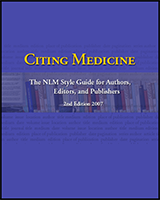
Plagiarism is copying information from another person's work without citing the source, with the intention to make it appear as one's own work.
Want to know more? Take the e-learning How to avoid plagiarism?
Books and journals offered by the University Library are considered to be reliable literature sources. Articles in academic journals undergo peer review before publication. An article that has been submitted for publication is first reviewed by other scientists in the same research area (=peers).
In a world with alternative facts and fake news, it is wise to critically evaluate (online) sources. View this video from Johnson and Wales University Library (5:27) for tips to help you assess the reliability and accuracy of the information that is offered.
View this video from North Carolina State University Libraries (1:54) for a short explanation on the use and why of citing your sources.
In the medical sciences the Vancouver style is often used to format references. Here is an example:

Volume generally refers to the number of years; 2011 is the 21st year Trends in cell biology (Trends Cell Biol) has been published. This article was published in 2011 (and thus can be located in volume 21) . Issue refers to the numbering within a year. Because Trends Cell Biol is a monthly journal, this article can be found in the December issue.
For more information see: Citing medicine: the NLM style guide for authors, editors, and publishers
by
Citing medicine: the NLM style guide for authors, editors, and publishers
by
Several reference software programs are available to help you with citing your sources when writing articles and reports: EndNote, Zotero etc.
The ICT service desk of the Radboudumc supports EndNote. If you would like to use other software, the Medical Library is happy to think along about the possibilities.

EndNote is a software program to collect and use literature references in your report or article.